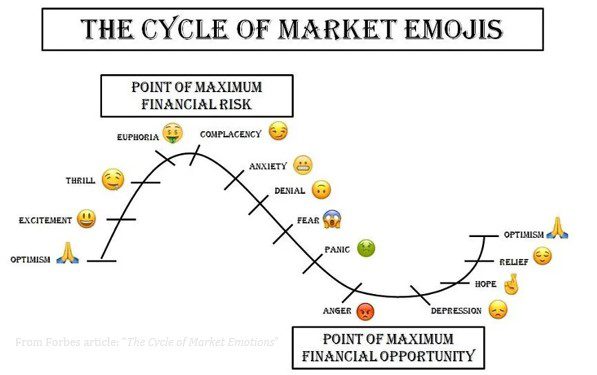10 Rules of Investing – Part 2
Blog post
05/16/24Back in April, my THOR colleague, Drew Woodard, began a blog series where he discusses Bob Farrell’s 10 Rules of Investing. Bob Farrell was a pioneer in market psychology and sentiment, and he believed there was more to a stock’s performance than just the financial statements. At THOR, we focus on fundamentals, but we also believe that technical indicators, which reflect market psychology and sentiment, deserve some attention as well. In this next installment of the series, I will continue to explore the next few guiding principles, still applicable today.
RULE 3: EXCESSES ARE NEVER PERMANENT. THERE ARE NO NEW ERAS.
The bubbles and the ensuing herd behavior we discussed in Part 1 are rarely, if ever, permanent. History has shown us repeatedly that the old saying “this too shall pass” still applies to today’s bubbles and corrections as it did to those of the past. The Dutch Tulipomania in the 1630’s, the late 1990’s Dot.com bubble, and the 2008 Housing crisis have one thing in common: They weren’t permanent. Speculation fads do not last forever. Do not fall victim to “this time is different” syndrome. There are no new eras. So often throughout history, there are players (central bankers, policy makers and investors) involved in every financial bubble who are convinced that this time the old rules of valuation no longer apply, and that the new situation bears little similarity to past disasters. There will always be speculation and temptation in both directions.
Rule 4: RAPIDLY RISING OR FALLING MARKETS USUALLY GO FURTHER THAN YOU THINK, BUT THEY DO NOT CORRECT BY GOING SIDEWAYS.
In Rule 1 we learned how markets return to the mean over time. Yes, this is true. But even though a hot group of stocks will eventually return to the mean, a strong trend can go on for an exceptionally long time, even years, and be deceiving. But once that trend ends, the correction tends to be sharp, fast and in the opposite direction- not sideways.
Rule 5: THE PUBLIC BUYS THE MOST AT THE TOP AND THE LEAST AT THE BOTTOM.
The American Association of Individual Investors (AAII) has been conducting a weekly investor sentiment survey since 1987. Each week, the AAII asks one question:
Do you feel the direction of the stock market over the next six months will be up (bullish), no change (neutral) or down (bearish)?
The survey offers insight into the opinions of individual investors (the public) and is a widely followed measure. However, while one might initially look to this survey for guidance on the future direction of the market, it is important to understand that it is more accurately used as a contrarian indicator. Meaning, it tells investors when to go in the opposite direction. In theory, excessively bullish public sentiment warns of a market top (the public is buying the most), while excessively bearish public sentiment warns of a market bottom (the public is buying the least). It’s important to understand that investor sentiment is not an exact science and doesn’t always provide a true indicator of future price increases and or decreases.
Rule 6: FEAR AND GREED ARE STRONGER THAN LONG-TERM RESOLVE.
Investor sentiment is often expressed as “bearish” or “bullish”, but it is more aptly described as “fearful” or “greedy.” These terms help measure the mood of market sentiment, but they also describe the primary driving emotions you experience as an investor. Don’t let your emotions take over intelligent decision making. Volatility can lead to overconfidence, greed, panic and fear. Bad decisions are often made in the heat of the moment. It is difficult to conquer inherent emotional biases, but you can at least understand the range of emotions you potentially could encounter. Be ready for volatility, have a long-term plan and stick to it.

Conclusion
Keep in mind these rules, like most in the investment world, are not without exception. Investing is a combination of art and science. However, awareness of these insights can help you maintain perspective. Stay tuned for a discussion of Bob Farrell’s last four rules in a few weeks.
If you have questions and would like to talk with us further, please call us at 513-271-6777. For more THOR reading, click here to go to the Blogs and Market Updates section on our website. Follow us on social media: